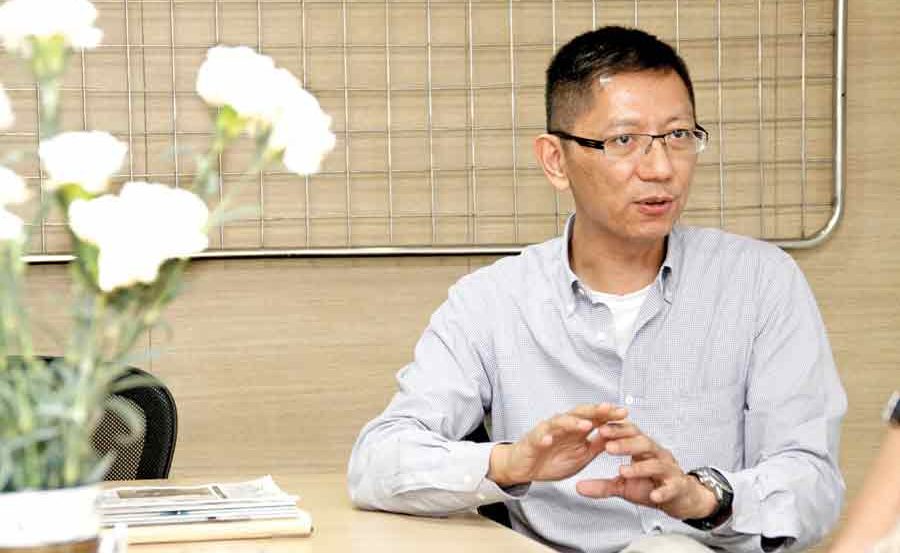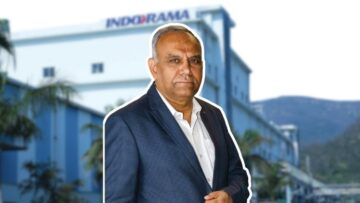Started 35 years ago as a small buying operation for sweaters in Hong Kong, Contempo is today a multi-million dollar buying network sourcing out of more than 15 countries with 16 offices in key regions including India. In fact, the buying office in Gurgaon, headed by Leela Kanuga, is the baby of the network having started operations only a year ago. In town to meet some key vendors, Christopher Tse, CEO, Contempo Limited and son of the owner, Betty Wong, took time off for the AO team to share insights into their global operations and the critical question… Why India?
Working mostly with US buyers, with about 80 per cent of the customers in North America, Contempo has in their customer profile both mass market and niche players which has balanced the operations of the network so that it was not adversely affected with the recession post-2008. “While some of our customers went under, others grew, thriving on the changing economic conditions. So, overall our growth was not retarded. In fact, even customers are looking to spread out their sourcing options to more countries rather than depending only on China,” argues Christopher.
Recalling the quota period of trade when Contempo was forced to source from around 30 countries to meet its customers’ needs, to reducing the destinations to just 4-5 sourcing hubs post-quota, Chris is now looking to build sourcing in around 12-13 countries with key vendors that jell perfectly with its varied customers. “China may still be huge, but for long-term sustenance it is important to spread out the risk… while most buyers are already in Vietnam and Cambodia, India and Bangladesh together are an exciting combination to handle both core programmes and fashion,” he reasons, adding that he regrets pulling out of the subcontinent earlier. “We are underinvested in these two countries and the strategy is to consolidate the operations in the first three years, build a strong vendor base and explore product options,” avers Chris. The India office is responsible for developing vendor base in Bangladesh also.

Very clear in his mind as to why India is now critical to the buying strategy of every customer, he says, “One of the biggest fallouts of the slowdown phase has been seen in the shopping preferences of consumers, who now are buying less, but spending more on differential products. When translated into business, this means that core products which were the bulk of business for most retailers are now shrinking and more focus is now on fast moving fashion items, the strength of Indian exporters.” Contempo is looking for design and inspiration from Indian vendors and Chris holds India’s ability in Product Development in high esteem. “It’s not about creating collections, it’s about the various techniques and design concepts that originate here. Recently, a design team from Contempo was in India looking at what local retailers and designers were doing and they were very impressed. China may be good at execution but very few design ideas can originate from the country,” reasons Chris.
“One of the biggest edges we enjoy as a buying network is that we are big enough to give an option of global sourcing to our customers allowing them to make choices when deciding where to place the order, yet small enough to service them personally.”
While, acknowledging that more and more sourcing is moving towards fashion, Chris is honest in admitting that the same is the biggest challenge today. “The whole approach to buying has changed… while sourcing for core items meant finding the cheapest destination without compromising on quality, working for fashion is a never-ending process where things are moving all the time. It is not the cheapest price but the right price for the value. Buyers are confused as to what will sell, so everyone is watching the streets and ramps; they are increasingly looking to differentiate and that is exactly where India fits in with its sampling abilities, flexibility and small run capabilities. Giving the buyer the freedom to experiment with new concepts and put something ‘different’ on the shelves,” he says.
The long running relations that Contempo has with many of its buyers has helped to create synergy that allows open discussions between the customer, Contempo and the vendors on product development, quality issues, problem areas and compliance hurdles. “My mother who started this company still interacts with the customers and as owners we are very much hands on. A lot many of our staff members has been with us for more than 15 years, some have been with us for 20-25 years and more, and customers have a great comfort level working with them,” says Chris.
While every office has the freedom to bring in new customers, the integration is exciting for every Contempo office since the new customers comes into the Contempo family knowing the strength of the network and that is what generates long-term business for the group. “We are very people-oriented and the culture is warm and inviting, something that comes from my mother. The offices are not islands, they are like fingers of the same hand, each supporting the other while also competing for the business,” says Chris with pride.
He goes on to highlight how Contempo is involved in developing vendors, so the fitment between customer and vendor is optimal. “We hold regular meetings with our vendors and they tell us the difficulties they face in complying to norms and we go back to the buyers to work out options. I remember when C-TPAT was introduced we even interacted with US customs office to sort out issues that were being faced by our vendors. For us developing a vendor is more important than rejecting vendors who are not as yet fully compliant,” says Chris. A separate department looks after compliance norms and regular workshops are held at sourcing bases to update the vendors on new regulations and how to become compliant.
Interestingly, Contempo is doing its own compliance audit and is not charging anything for the same. The idea is to support the vendors to improve their processes and remain compliant to standards of different customers and not shake off responsibility. ‘We are all in it together, there has to be a partnership approach… the old way of managing business through remote control no longer works, as there is no margin left for error,” says Chris. He adds that compliances are no more a big problem area as most vendors are well aware and compliant to ethical codes.
Currently, the India office is sourcing garments, fashion accessories and jewellery. Going forward, leather products are being explored. In a consolidation phase, Contempo is very happy to have Leela at the head of operations. “Working with Leela is a pleasure, as she brings to the table many years of experience sourcing for US customers and a deep understanding of India sourcing weaknesses and strengths, and also a relationship base of vendors at all levels to complement our buyers’ needs. All of which give the confidence to say that the Indian office is an important growth engine for the future,” concludes Chris.






